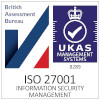📡 Core Rock Properties Measured by Adrok's ADR Technology
1. Dielectric Permittivity (ε or Relative Permittivity)
- Measures how much the rock resists or stores electric energy.
- Varies with mineral composition, fluid saturation, and porosity.
- Key for distinguishing wet vs dry zones, clays vs sands, and different lithologies.
2. Electrical Conductivity / Resistivity
- Indicates how well the rock conducts electrical current.
- Influenced by fluid content, salinity, and mineralization.
- Helps locate brines, hydrothermal fluids, or conductive ore zones.
3. Atomic Dielectric Resonance (ADR) Frequencies
- ADR detects resonance frequencies associated with specific atoms or molecules (e.g., H₂O, CO₂, hydrocarbons, certain minerals).
- Each material has a distinct resonant signature, allowing for material-specific identification.
- Useful for detecting water, hydrocarbons, clays, and certain ores.
4. Energy Absorption and Reflection (EM Response)
- Measures how much EM energy is reflected, absorbed, or transmitted by the rock.
- Indicates changes in lithology, fluid saturation, and structural features.
- Reflects layer boundaries, faults, or porous zones.
5. Thermal Properties (Indirect Measurement)
- ADR responses are temperature-sensitive because the dielectric properties of materials change with heat.
- Can infer temperature gradients, which is crucial in geothermal exploration.
6. Density and Porosity (Estimated from EM Signatures)
- Porosity and density can be indirectly inferred by combining dielectric and resonance data.
- Helps identify reservoir quality, permeable zones, and caprocks.
Download 8.5-1 Adrok pre-drill v drilling for Lithology onshore UK PDF
Download 8.5-2 Adrok vs petrophysics onshore UK Petex2024 v1.0 PDF



